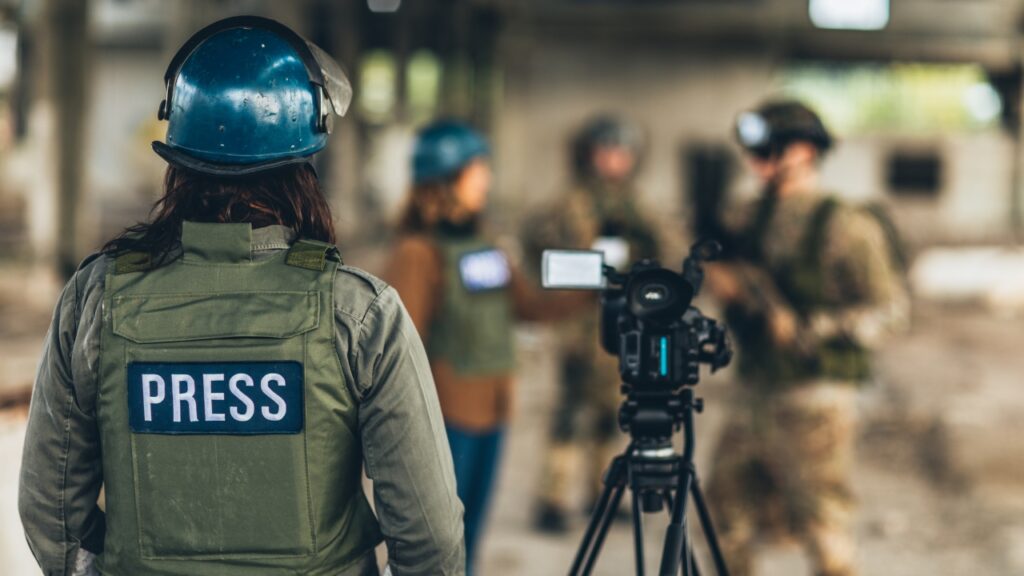Executive Summary
Journalists in war zones are facing unprecedented risks. From Gaza to Ukraine, Myanmar to Sudan, reporters have become not only witnesses to conflict but deliberate targets. More than 500 journalists have been killed or injured worldwide since 2020, with Gaza alone becoming the deadliest conflict for the press in modern history. Despite existing United Nations resolutions and EU commitments, accountability for attacks remains rare, and protection mechanisms are inadequate.
This brief argues that both the European Union and the United Nations must strengthen their role in protecting journalists through enforceable accountability mechanisms, expanded safety training and funding, and greater integration of press protection into broader humanitarian and conflict-resolution strategies.
Introduction
The killing and harassment of journalists in conflict zones represents a direct assault on press freedom and democracy itself. Journalists are essential to documenting human rights violations, countering propaganda, and ensuring that the public retains access to truthful information. When they are silenced, entire communities are left in darkness.
Although the UN Security Council has passed resolutions affirming the need to protect journalists, these commitments remain largely symbolic. The EU has positioned itself as a defender of press freedom, but its measures remain fragmented and often reactive. A coordinated strategy that combines legal accountability, material protection, and political will is urgently required.
💡 “Over 80% of journalist killings worldwide go unpunished.”
Policy Options for the European Union
The EU has both the leverage and resources to play a leading role. It can embed press protection into its external action service, making safety a core element of its diplomacy and development programs. Dedicated funding should be directed to safety training, emergency relocation schemes, and digital security for journalists working in high-risk environments.
The EU can also condition trade, aid, and political agreements on the protection of media freedom, ensuring that states or actors responsible for targeting journalists face meaningful consequences. Finally, stronger collaboration with civil society organisations, from Reporters Without Borders to the International Federation of Journalists, would allow the EU to integrate on-the-ground expertise into its policies.
Policy Options for the United Nations
The UN must move beyond rhetorical commitments and establish enforceable mechanisms. This could include mandating the Secretary-General to publish annual accountability reports on states and armed groups that target journalists. The Security Council should consider sanctions on individuals and entities responsible for repeated violations.
The International Criminal Court, with jurisdiction over war crimes, should be encouraged to treat systematic attacks on journalists as prosecutable offenses. Parallel to enforcement, the UN should expand its support to journalists through UNESCO programs, including protective equipment, digital security resources, and emergency funding.
“Protecting journalists is not only a matter of professional solidarity — it is a matter of defending truth.”
Conclusion
The protection of journalists in war zones is both a moral and political imperative. Without independent reporting, wars become silent, atrocities go unrecorded, and accountability collapses. For the EU and UN, protecting journalists should not be seen as a secondary issue but as a cornerstone of conflict prevention and peacebuilding.
This brief recommends that both institutions move decisively from statements to action: embedding press protection into diplomacy, ensuring accountability for perpetrators, and providing concrete resources for journalists at risk. By doing so, they can defend not only the lives of reporters but also the right of societies everywhere to know the truth.

